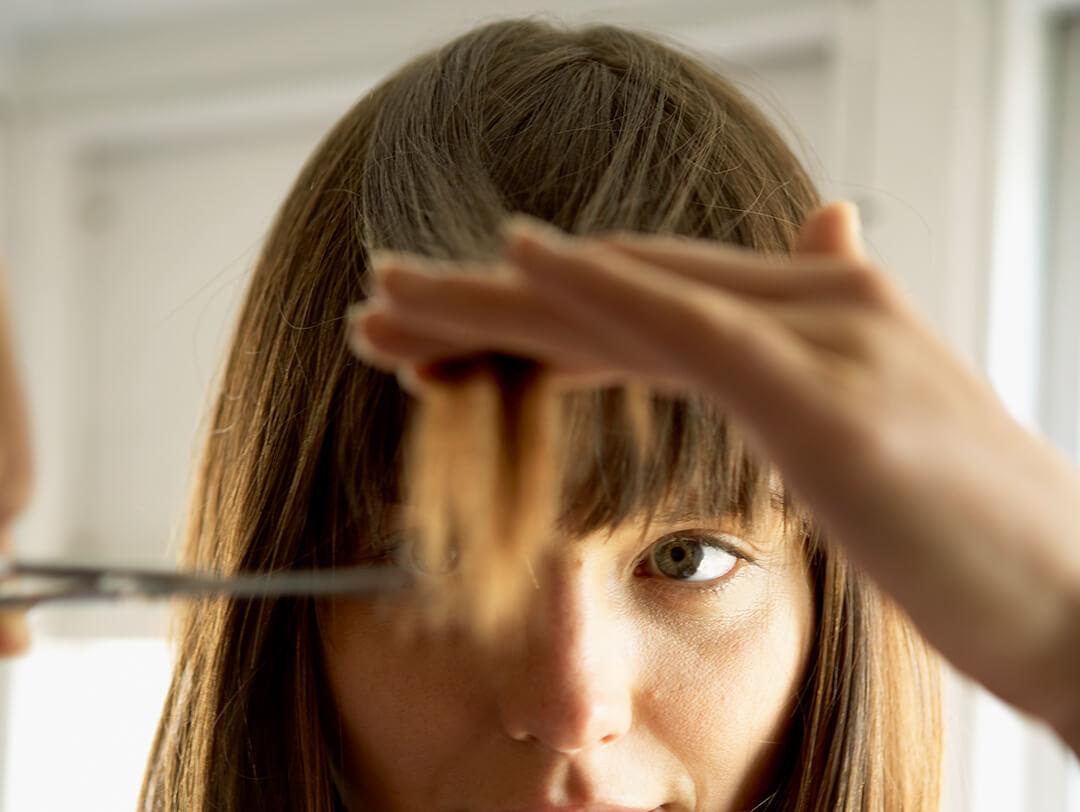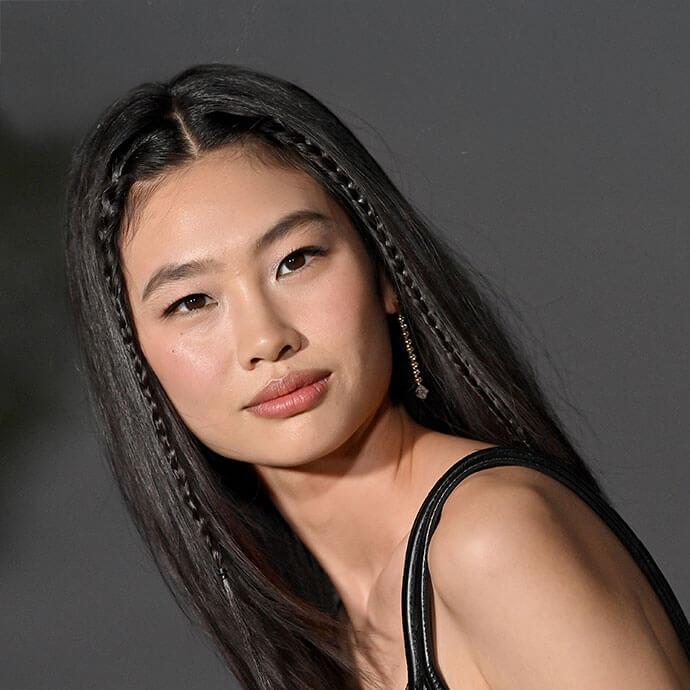Have You Heard of Dry Haircuts? Here’s Why You Should Try One



Pia Bhattacharya


We always thought we knew exactly what to expect at the hair salon. We consult with our hairstylist, then wash, cut, blow dry, style, and go. But recently, we’ve noticed a shake-up in our usual hair salon routine. It’s a cutting technique called dry cutting, where stylists take shears to your completely dry strands. That means after washing and drying or sometimes even before a drop of water hits your head. While this lesser-known haircutting style is anything but new, it’s gained popularity for its many benefits. For some hair types, such as curly or thick hair, dry cutting can do wonders to enhance your hair texture. For others, it can help your stylist add shape and dimension right where you need it. Wondering if a dry cut is the key to your best haircut ever? Here’s everything you need to know about dry haircuts with tips from Los Angeles–based hairstylist Kelly Carbajal.
Curious about cutting your hair at home? Check out Clayton Hawkin’s top tips:


It's about glam time you treated yourself.
MEET THE EXPERT
Kelly Carbajal is a Los Angeles–based hairstylist. Check out her work @kellythehairslayer.
What Is a Dry Haircut?
You’re probably used to your stylist cutting your hair wet, then using scissors or a razor to fine-tune and add detail once your hair is dry. With dry cutting, all the major snipping and shaping are done first. “A dry hair cut is simple as it sounds—you’re cutting hair dry versus wet,” says Carbajal. This can be beneficial for many reasons (aside from getting you out of the salon chair faster). Looking for a long haircut? “Dry haircuts are great for people looking to cut what they need, and who are scared of going too short,” says Carbajal. Hair can appear longer when wet and weighted with water, so cutting dry ensures you’re not taking too much off.Cutting hair while it's dry also allows your stylist to be super precise. Split ends, uneven length, and even damaged areas are clearer and easier to see, so your stylist will know exactly where to cut and how to enhance your hair’s natural movement. Another reason to love a dry haircut? You, the client, can see results in real-time—unlike with wet haircuts, “What you see is what you get,” says Carbajal. “It allows clients to watch their hair transformation, which is my absolute favorite.”
Dry Haircuts for Your Hair Type
Dry haircuts can benefit just about any hair type and texture, according to Carbajal, who adds, “I like to cut on dry hair when my client wants to play up their natural texture and see the hair transformation up front, rather than it being a surprise when it dries.”
1. Curly Hair Types, Dry Cuts are Your Holy Grail
“With curly hair, I’m able to be more precise and work with shapes better than when the hair is cut wet. It allows me to see how the hair moves in its natural state.” If you have waves, coily hair, or curly hair, a dry cut is perfect for preventing an uneven curl pattern. When hair is wet, it’s harder to judge how much the curl will spring back after cutting, so a dry cut enables your stylist to be selective about which curls they cut and how they’ll fall.
We love: For natural hair types, TWISTED SISTA Curl Activator Creme combines styling with haircare to deeply moisturize, reduce frizz, add shine, and define curls thanks to coconut, almond, and avocado oils.
2. For Thick Hair Types, Dry Cuts Can Enhance Shape
If you’re blessed with thick hair, cutting away too much hair might be your last concern. Because thick hair naturally has more weight and can feel heavy, dry haircuts allow stylists to strategically remove bulk while enhancing shape and adding movement where needed.
3. Damaged or Fine Hair? Dry Cuts Can Help
When your hair is fine, weak, or brittle, you want to get rid of damagewithout losing healthy hair. Dry cuts are a go-to for playing up what you’ve got. “If someone has fine or damaged hair, I’m able to see what [can stay] and what needs to go,” says Carbajal. When your hair is wet, your stylists can easily spot where texture is needed, where damage can be removed, and how your hair behaves in its natural state. It also minimizes combing through wet hair, which can cause fragile, thin hair or even straight hair to snap.
We love: BRIOGEO Don’t Despair, Repair Deep Conditioning Mask, made with rosehip and argan oils, to help repair damage, fight breakage, restore shine, and more.
Are There Downsides to a Dry Cut?
The short answer: Not really. Like with all haircutting techniques, your stylist will determine if it will bring out the best in your hair length, type, and texture. If you’re curious about dry cutting, ask your stylist at your next appointment, and be honest about your goals going in. Carbajal says, “Consider your dry haircut to be more personalized to you. You want to be clear on how you style your hair daily to get the best end results and achieve an effortless look.”
Want the best hairstyling products and tips? Take our Beauty Quiz now to get started. Already an Ipster? Refer your friends to earn points, which you can use toward products. Either way, don’t forget to check us out on Instagram and Twitter @IPSY.
Like this article? Share it with your friends by clicking the icons below!
Liked this post? Share!
Related Stories


Hair
10 Easy and Cute Hairstyles That Take Zero Effort (and Time)
Published on Dec 15, 2025 • 6 min read


Hair
21 Easy Hairstyles to Enhance Your Natural Curls and Coils
Published on Dec 3, 2025 • 11 min read


Hair
The Ultimate Guide to Styling Short Hair
Published on Dec 1, 2025 • 11 min read


Hair
From Bangs to Blonde: The Hair Trends Taking Over 2025
Published on Dec 16, 2024 • 5 min read


Hair
Scalp Exfoliation Is the Key to Healthier Hair—Here’s How to Do It Correctly
Published on Nov 21, 2025 • 9 min read


Hair
The 10 Best Hair Masks and Conditioners to Promote Hair Growth
Published on Mar 11, 2024


Hair
20 Trendy Hairstyles That’ll Make You the Life of the (Holiday) Party
Published on Oct 15, 2025 • 9 min read


Hair
Easy Thanksgiving Hairstyles to Look Polished While You Feast
Published on Oct 2, 2025 • 6 min read


Beauty Picked Just for You
Get 5 products worth up to $70
Plus exclusive access to epic deals up to 80% off
Starting at just $14/month. Cancel anytime.